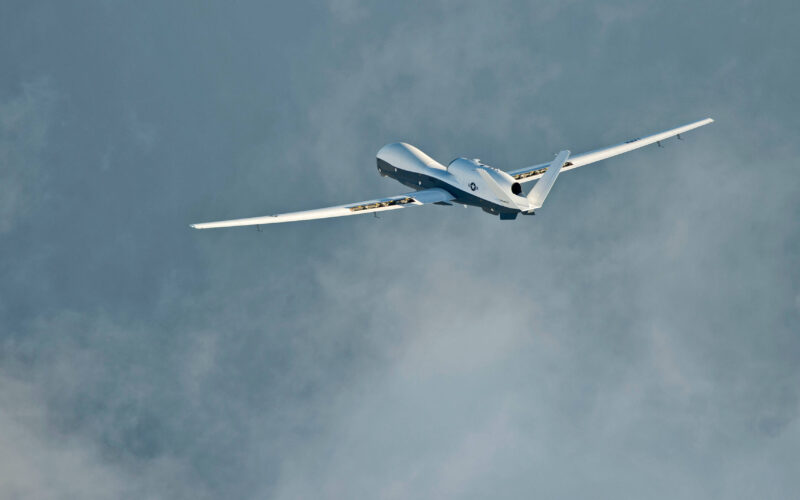The Iranian Revolutionary Guards Corps (IRCG) claimed to have shot down a U.S. drone near the Strait of Hormuz, southern Iran. The information was confirmed by a U.S. official.
The Iranian news agency IRNA said that an RQ-4 Global Hawk “spy drone” had been shot down by an anti-air missile, as the aircraft had entered the Iranian airspace with its transponder off. “Perpetrators of any illegal entry of a foreign object in the Iranian airspace, and any violations of the Islamic Republic of Iran’s territory are categorically warned of the consequences,” said Seyyed Abbas Mousavi, the Iranian Ministry of Foreign Affairs spokesman.
U.S. CENTCOM, the U.S. military command for Central Asia and the Middle East, denied that any of its drones had been sent over Iran. But the explanation came later on: a U.S. official confirmed to Reuters that a drone had been shot, except that it was not a RQ-4 Global Hawk, but another one based on the same airframe, the MQ-4C Triton.
The Northrop Grumman MQ-4C Triton is a High Altitude Long Endurance (HALE) drone based on the Global Hawk, which sports a multi-sensor mission payload (radar, electro-optical, infra-red, electronic support measures). The aircraft can fly up to 24 hours at altitudes of up to 56,500 feet with an operational range of 8,200 nautical miles and can monitor 1 million square miles of ocean in a single flight. It is specialized in maritime surveillance and is thus operated by the U.S. Navy.
The official also denied that the drone entered the Iranian airspace but was instead shot as it was flying in international air space over the Strait of Hormuz. So far, no footage or picture of the downed drone has emerged.
Tensions in the Sea of Oman
It is in that region that on June 13, 2019, two tankers were hit by explosions, increasing tensions between the United States and Iran. Washington immediately accused Tehran of being behind the attacks, while the latter denied any involvement, suggesting instead that the United States orchestrated a casus belli. Through the Strait of Hormuz, a fifth of the world’s oil passes each day.
Last month, on May 6, 2019, John Bolton, President Trump’s national security advisor announced that four B-52H Stratofortress strategic bombers would be deployed in the Middle East. Additionally, the USS Abraham Lincoln, along with its Carrier Strike Group 12, should also be deployed earlier than planned in the US Central Command (CENTCOM) area of responsibility.

